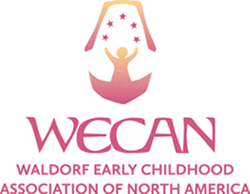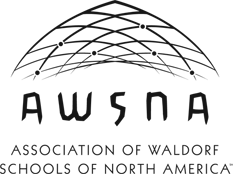Annual Festivals
Throughout the year, our school celebrates festivals to connect us with the cycle of nature, establish a yearly rhythm for the children, and strengthen our community.
ROSE CEREMONY – First Friday back at school
The school year begins and concludes with the Rose Ceremony, giving a “full circle” experience through the welcoming and farewell roses exchanged between the First and Eighth Graders. The Rose Ceremony marks a significant moment in time for our incoming and graduating students.
MICHAELMAS FALL FESTIVAL – September 29th
Waldorf Schools around the world celebrate Michaelmas, which began as a harvest festival in the Middle Ages. The actual celebration day every year is September 29th. This feast honors the archangel Michael, who is a a figure common to Judaism, Christianity, and Islam. He is a symbol of good triumphing over evil, courage over cowardice. The celebration of this holiday teaches the importance of facing fears and strengthening resolve.
Michaelmas falls near the autumn equinox, marking the end of the harvest and the summer. The days begin to grow ever shorter which marks a time of turning inward, a time of gathering strength to face the growing darkness.
This school wide celebration is the first festival of our new school year. The way we celebrate Michaelmas is with an all-school play and a potluck. Each class assumes the same role that is passed down from grade to grade, year after year. As with so many traditions in Waldorf schools, this tradition becomes an exciting rite of passage as each grade graduates from role to role as the years go by.
Rudolph Steiner considered Michaelmas the second most important festival
after Easter.
MARTINMAS/LANTERN WALK – November 11th
The celebration of Martinmas comes with the beginning of the colder and darker days of autumn, between the fiery out breath of Michaelmas and the deep in breath of the winter holidays. It honors, in a universal way, the story of St. Martin, patron saint of beggars and outcasts, who was known for his gentleness and his ability to bring warmth and light to those in need.
From France comes the story of St. Martin, who as a young man passed under an archway of the city of Amiens and discovered a poor beggar huddled there. The man was barely clothed, and shivering with cold. On seeing him, the young Martin took his cape from his own shoulders, tore the garment in half, and covered the poor man to warm him. The following night Martin had a dream in which he saw an angel wearing this same piece of his cape. The experience confirmed in him his devotion to all mankind regardless of their station in life. Martin went on to become patron saint of beggars and outcasts, and was known for his gentleness, his unassuming nature and his ability to bring warmth and light to those in need.
As we journey into the darkest time of the year, it is increasingly important for each of us to kindle warmth and light in our hearts. Martin’s cloak can remind us to share with those in need. The gently glowing lanterns of Martinmas will give way to the candles of the advent spiral as we draw nearer to the Solstice, showing how our inner light must shine ever brighter against the cold. As nature sleeps, we must be wakeful!
During our annual Martinmas Lantern Walk, children and parents are invited to gather together as the sun sets, carrying handmade lanterns, symbolizing our own individual light.
This is a quiet, meditative celebration. Following the lighting of the lanterns, the children will walk around the school with their class, singing lantern songs. Parents are asked to walk with their children and to help preserve the mood of the evening by joining in the singing and encouraging the children in reverence and calm.
ADVENT/WINTER SPIRAL – between November 27th and December 24th
The winds blow cold reminding us all that the chill of winter is coming. The days continue to darken and so we begin to bank the fires of our home life that will help nurture us through the dark winter’s cold.
Advent is approaching: a time for inner preparation as we look forward to kindling the inner light that glows within us all. At the Anchorage Waldorf School as well as in many other Waldorf schools there is a tradition of the Advent Spiral. It helps us to prepare for the peaceful celebration of the winter festivals.
The Advent spiral began in the 1920s when a curative nurse brought it into a group home dedicated to the care of children with disabilities. She had been inspired by the custom from long ago in Bavaria, where farmers would bring moss and twigs into their homes and fashion a garden on a table, which was lit with candles in apples. For them it was an expression of an old parable of Paradise. Later the festival was brought to Waldorf Schools all over the world.
Evergreen boughs (a symbol of life everlasting) are placed in a spiral form on the floor (or the ground outside) with a large candle in its center. The room is darkened and the mood is peaceful. The spiral begins; one at a time each child walks into the spiral with a lantern in which sits an unlit candle. They walk with or without help from teachers and or parents depending on their needs and make their way to the spiral’s center. There they find the large lighted candle and from it light their own. They place their lantern with care and with help if needed somewhere along the spiral’s path and then they walk their way back to their seat.
It is a special moment to watch a young child wend their way through the spiral’s path and find the universal light that they then take back to give to the world.
The experience of the Advent spiral reflects the human experience at this time of the year; entering a time of darkness, of shorter days and longer nights and going forward with hope to welcome the light of the sun after the winter solstice.
MAYFAIRE –
Waldorf™ is a trademark name in the United States, and is reserved for independent schools which meet the membership standards established by Associated Waldorf Schools of North America (AWSNA). The Anchorage Waldorf School is a member of AWSNA, and uses the name here with permission.



